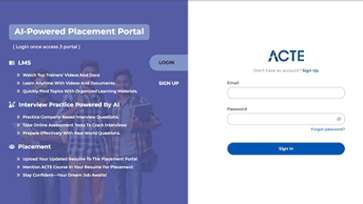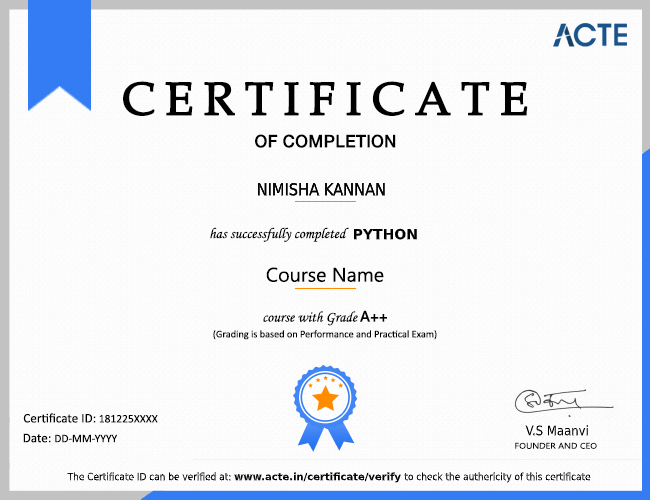SPARQL online training instructor-led online training illustrates thru hands-on discussions and practices a way to use SPARQL for retrieving and manipulating the information stored withinside the RDF structure. In this on line schooling, you'll apprehend the variations among relational information and semantic net information. Through this course, you'll paintings on real-international situations to accumulate realistic information of querying the general public datasets, information modeling, transitioning the website’s information, and jogging SPARQL queries. Join our SPARQL online Training and pursue your profession as a Data Engineer.
Additional Info
What is SPARQL?
Wikidata makes use of a question language is known as SPARQL (pronounced "sparkle"). SPARQL queries permit you to ask very precise questions on facts protected in Wikidata, and to faucet into Wikidata's repository of structure, connected data. SPARQL stands for a "protocol and RDF question language," that's what SPARQL is. The "S" stands for SPARQL, which completes the recursive acronym pun. The crucial factor to understand is that SPARQL is a question language for information graphs, that's ideal for connected data.
SPARQL Tool: Onto Quer
In order to make SPARQL queries extra on hand to customers, the OntoQuer device becomes advanced through Java programming
language, Swing, and AWT libraries the use of Eclipse. It is appropriate for a newbie who desires to design, create the
Journal of Software 148 Volume 12, Number 2.
SPARQL question without the expertise of complicated syntax and the shape of the ontology. It is the device to
generate URIs and customers can pick URIs. Then, the SPARQL question might be
routinely created.
This machine has diverse and complete menus along with easy queries lists, lists of
entities, classes, … saved through the person. The first menu is “Ontology Choice”, customers can pick the ontologies and import the unmarried ontology or more than one ontologies into the machine. Next is the “Search” feature. The customers insert the key phrases for classes, properties, man or woman from situation or item part, … for easy filtering, and the machine will generate URIs routinely.
Third is “Query&Inner Join”, customers can pick listing of, and. This procedure will build
the SPARQL question the use of URIs from seeking features. The fourth procedure is union feature and subsequent is grouping
capabilities along with sum, count, … Last is the console window if you want to show a few messages from the machine
Journal of Software along with redirect errors, message for connection.
OntoQuer is a device for customers growing and reviewing SPARQL questions easily. It has diverse benefits as following:
It is person-friendly, despite the handiest one or more than one ontologies. Users do now no longer require the expertise of SPARQL syntax. This device permits the customers to validate absolutely or redundancy of ontologies shape. The consequences are clean visualization, clean to be understood. It can display the information as needed, and it could decide the accuracy of the ontology shape. The easy looking procedure, customers can seek in every step respectively.
Components and Functionality
The Snap-SPARQL framework incorporates numerous additives that can be split
into programmer-dealing with and end-user-dealing with additives. We offer some brief
info of every one of those additives below
A SPARQL Parser
The framework consists of a parser that consumes SPARQL syntax and transforms it into high-stage axiom templates and different records systems that represent
SPARQL queries at a summary stage this is syntax unbiased. The parser was
designed with helping context-touchy auto-crowning glory in thoughts and it forms
a part of a modifying package this is a part of the framework
At the time of writing the parser helps maximum of the SPARQL 1.1 specs in phrases of language capabilities. However, a few capabilities, along with assets path
expressions, aren't supported. In phrases of parsing axiom templates, the parsing
of complicated elegant expressions isn't always presently supported, however that is deliberate as
a part of destiny work.
An implementation of the SPARQL Algebra
The SPARQL Algebra is fixed of operators that collectively may be used to shape
SPARQL Algebra Expressions. An instance of an algebra expression, that corresponds to the concrete SPARQL question proven in Figure 1, is proven below.
An algebra expression, collectively with records, represents a high-stage summary view
of a SPARQL question, this is unbiased of syntactic shortcuts or variations,
and syntax-stage key phrases and punctuation. The algebra is used to outline the
semantics of SPARQL and it is able to additionally be used to derive a canonical procedure
for question answering.
Basic Graph Pattern Matching with Pluggable Support
Answering SPARQL queries at the most fundamental level entails computing answer sequences to Basic Graph Patterns (Axiom Templates) and then processing those answer sequences in accordance with the SPARQL algebra discussed in the preceding section.
The benefit of this pluggable method is that researchers and builders interested in assisting the OWL entailment regime and investigating optimizations for question answering under this regime can focus on axiom template assessment implementation without disrupting other SPARQL capabilities.
A SPARQL Editor
Writing SPARQL queries may be difficult for customers. It calls for them:
to be pretty well-versed with Turtle syntax in an effort to assemble the fundamental graph
styles that shape the middle of any question, to recognize the numerous SPARQL
key phrases and the way those may be used, to efficiently setup prefix names and
prefixes after which use them always withinside the frame of the question, and to use
the area vocabulary in the query such that the queries definitely make sense.
The state of affairs will become greater difficult while fundamental graph styles have to be
well-shaped for a given entailment regime along with the OWL entailment regime.
In order to help customers in writing SPARQL queries, the framework gives an
editor element that may be reused in third-birthday birthday celebration tools. The editor gives the
forms of capabilities that one could anticipate in a present-day improvement environment
along with syntax highlighting and auto-crowning glory.
A Protege Plugin
The very last Snap-SPARQL element is a Prot´eg´e plugin that exposes all of the
formerly defined capabilities to end-customers of Prot´eg´e. In particular, the
plugin gives the modifying functionality defined above alongside a mechanism
to view question results. The plugin is reasonably tightly incorporated into the Protege
environment, because it makes use of the ontologies which can be loaded into the lively Protege
workspace, alongside the presently decided on reasoner for the cause of imparting inferred statistics to the fundamental graph sample evaluator element of
the framework.
SPARQL Framework:
A framework for the partial assessment of SPARQL online training queries on a couple of RDF information reassets, each at a neighborhood and international level, is proposed. According to the proposed approach, international assessment of queries is achieved via way of means of first appearing neighborhood assessment on every information source, then merging the acquired results. When merging the results, time period equivalence throughout one of a kind reassets is evaluated via way of means of searching on the context of every time period. Moreover, the framework permits scoring partial solutions via way of means of comparing how a whole lot a partial solution is capable of seizing every idea expressed withinside the query. Finally, an allotted index shape is proposed that helps early pruning of vain intermediate results.
Roles and Responsibilities of SPARQL:
- Ability to govern and examine the huge scale, high-dimensionality statistics from various sources
- Experience in growing and retaining information graph statistics systems
- Experience in semantic consistency checking
- Ability and revel in statistics integration
- Experience in manipulating unstructured, semi-established, and absolutely established datasets
- Capability to apprehend and version a website in interactions with the customer
- Love for statistics and statistics semantics
- An open mind; the choice to research the maximum suitable language/generation to clear up a given problem
- Readiness to paintings in uncertainty concerning the decision of a problem, the life of manner to remedy it and, sometimes, withinside the absence of particular objectives
- Autonomous and responsible; prepared and established in projects and paintings
- Detail-orientated and capable of maintaining an international imagination and prescient of the troubles and their solutions
- Ability to layout stop to stop solutions
- Assist with designing, growing, testing, and retaining statistics pipelines and datasets.
- Extract, rework, and cargo statistics from numerous statistics sources.
- Maintain the statistics warehouse this is used for enterprise reporting.
- Helping to combine statistics transfers among inner and outside structures and applications.
- Assist in growing procedures to make certain and validate statistics reliability and quality.
- Create and construct strong statistics systems and pipelines to guide stop user's evaluation and selection making.
- Monitor statistics warehouse eco-device and make certain statistics procedures run and whole on a well-timed foundation to make certain enterprise continuity.
- Adhere to timelines and excel in a fast-paced, high-electricity environment.
- Help power statistics first-rate practices and make a contribution to the improvement of ordinary statistics methods and roadmap.
Requirements of SPARQL:
- 5-7 years’ revel in as an information engineer.
- Experience with Data Warehousing
- Understanding of relational and dimensional information modeling.
- Experience with Microsoft SQL Server
- Excellent expertise of T-SQL, revel in tuning queries.
- Experience running with information warehouses and ETL and ELT applications (SSIS, Stored Procedures, Azure Data Factory).
- Coding skill ability in a single or extra language (e.g., Python, Scala), information in SQL (e.g. MS SQL, T-SQL, SPARQL), and familiarity with one or extra schema definition languages (e.g. DDL, SDL, etc.).
- Basic information of SPARQL Online Course.
- Familiarity with Oracle E-Business Suite information version strongly preferred.
- Experience with information visualization tools. A strong choice for PowerBI however will recall different main BI tools.
- Familiarity with Azure information warehouse and/or information lake infrastructure.
- Familiarity with Azure Data Factory, Data Bricks, Azure Analysis Services, SQL Managed Instance, and Synapse.































